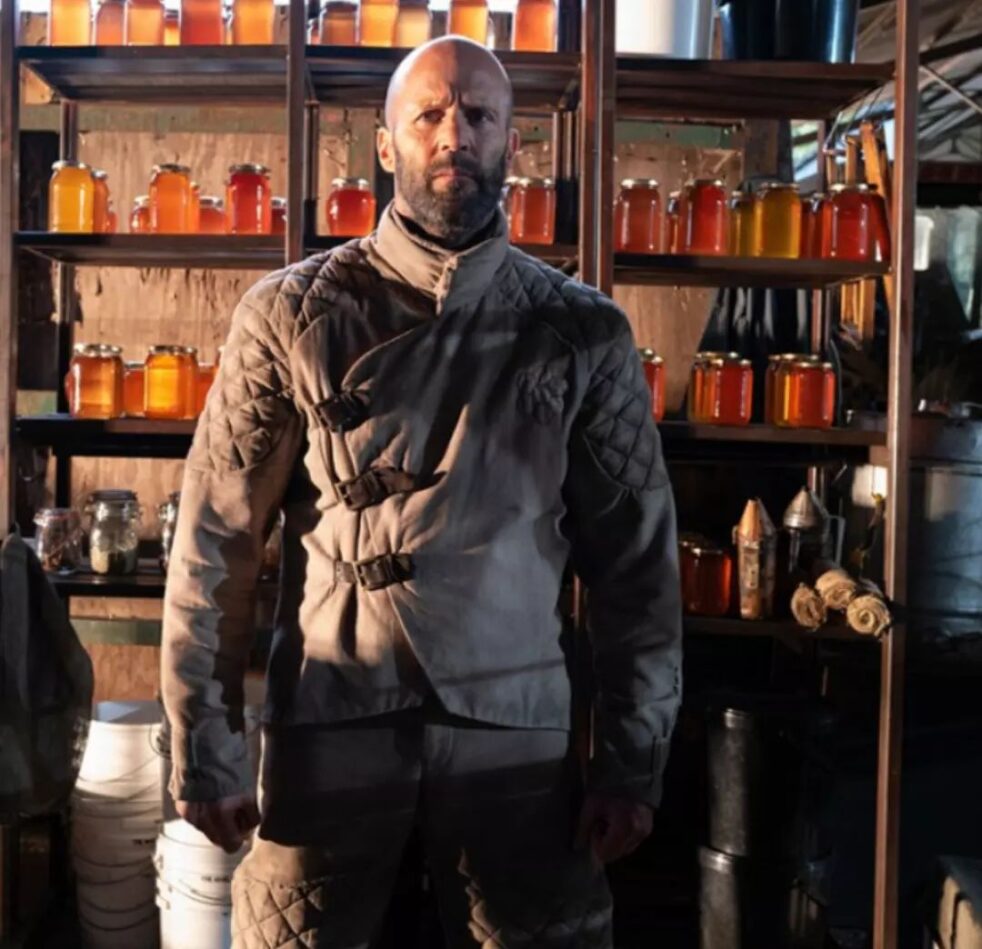In a beehive, there is such this as a queen slayer. If a queen bee does not produce a viable offspring, a worker bee will stop at nothing to kill her to restore the hive’s balance. With Jason Statham (“The Expendables”) taking the lead, “The Beekeeper” embarks on a revenge story mirroring this phenomenon.
Statham plays Adam Clay, a retired Beekeeper who rents a barn from a kind old woman, Eloise Parker (Phylicia Rashad, “The Cosby Show”). After Parker falls victim to a phishing scam that steals all of her money, including two million dollars from a charity she works with, she commits suicide. In true “John Wick” style, Clay uses her death as the impetus to enact revenge against those who took advantage of her. Unbeknownst to the government, Clay is a retired Beekeeper, a clandestine operative used to maintain society’s balance through lethal means. In his eyes, the scammers interfered with the hive by exploiting an elder. Due to their injustice, they, along with their boss, deserve to die.
Parker’s daughter, Verona Parker (Emmy Raver-Lampman, “The Umbrella Academy”), is an FBI agent who begins to follow Clay’s body trail as it leads further up the corporate hierarchy. After burning down the scammer’s local base and mutilating their mercenaries, Clay finds himself in a deadly game of cat-and-mouse hunting for the son of the President of the United States, played by Josh Hutcherson (“The Hunger Games”).
Clay is no different from Statham’s usual characters. The ultra-tactical, secretly compassionate man mirrors his character in “The Expendables,” “The Meg” and almost every other action movie he stars in. That being said, he perfects the persona. The fight scenes and interactions with his adversaries do not disappoint. No battle is the same. Some men get impaled, others are hung and still more are brutalized through hand-to-hand combat or objects found nearby. One discrepancy, though, is the lack of female representation through any of the fights. Aside from Verona Parker, almost every secret service agent, mercenary, bodyguard and psycho killer is a man. The one female they highlighted was the current Beekeeper, who barely touched Clay before he burnt her alive.
Another inconsistency arose in the repetition of Clay’s unmatched talents. One villain, Lazarus, is the only survivor of a Beekeeper attack. While he lost his leg, he said he was lucky to survive as no one kills a Beekeeper. However, in his fight with Clay, Lazarus held his own and even seriously injured him. Clay killed him, but the idea that Lazarus survived just because he was lucky yet nearly fights off Clay makes for poor writing.
Bees as a metaphor provides most of the intrigue for “The Beekeeper.” There is very little use of actual bees throughout the film, but Clay’s entire personality comes from him wanting to protect the hive. Hutcherson’s character also had little personality aside from being a slacker. Aside from his drug addiction, horrendous hairstyle and acting like an insolent child, his character has an obsession with money which leads him to founding a multi-million dollar scamming business. Coming off his role in “Five Nights at Freddy’s,” Hutcherson does well embodying a spoiled young adult about to be taught justice.
The attempt to scale Clay’s mission from lower-middle class all the way to the President of the United States is a large leap that felt too ambitious. Even with a predictable storyline and lackluster characterization, “The Beekeeper” is still an enjoyable film, especially if you are craving revenge or want a taste of “John Wick” without the franchise commitment.
